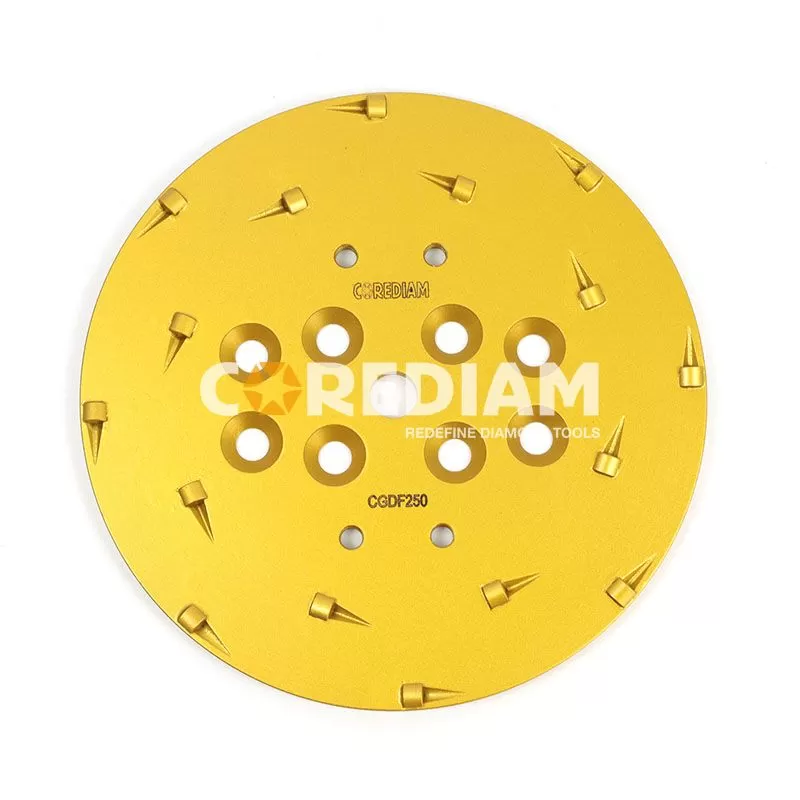Mar. 01, 2024
Polycrystalline diamond (PCD) grinding wheels have revolutionized various machining processes across industries due to their exceptional hardness, durability, and precision. In this article, we delve into the intricacies of PCD grinding wheels, exploring their composition, advantages, applications, and considerations for optimal use.
Composition and Structure: PCD grinding wheels are composed of polycrystalline diamond particles bonded together by a matrix material, typically cobalt or a combination of cobalt and other metals. These diamond particles are synthetic, engineered to possess superior hardness and abrasion resistance, making them ideal for grinding applications.
The manufacturing process involves high-pressure and high-temperature synthesis, where diamond particles are sintered together under extreme conditions to form a robust composite material. This process results in a dense, uniform structure with excellent wear resistance and thermal stability.
Advantages of PCD Grinding Wheels:
Exceptional Hardness: PCD grinding wheels are renowned for their unparalleled hardness, surpassing traditional abrasive materials such as aluminum oxide or silicon carbide. This hardness enables them to withstand high-speed machining operations and maintain cutting-edge sharpness over extended periods.
Extended Tool Life: The exceptional wear resistance of PCD grinding wheels translates to extended tool life, reducing the frequency of tool changes and downtime in machining processes. This longevity enhances productivity and cost-effectiveness, especially in high-volume manufacturing environments.

Precision Machining: PCD grinding wheels offer precise and consistent machining results, enabling manufacturers to achieve tight tolerances and superior surface finishes. Their uniform structure and minimal tool wear contribute to enhanced dimensional accuracy and surface quality in machined components.
Versatility: PCD grinding wheels cater to a wide range of materials, including non-ferrous metals, ceramics, composites, and advanced engineering plastics. Their versatility makes them suitable for diverse industries such as automotive, aerospace, electronics, and woodworking.
Applications of PCD Grinding Wheels:
Recommended article:Metal Machining: Diamond grinding wheels are extensively used in metal machining applications, including grinding, sharpening, and shaping of cutting tools such as drills, end mills, reamers, and inserts. They excel in machining non-ferrous metals like aluminum, copper, and titanium alloys, delivering superior performance and longevity.
Woodworking: In the woodworking industry, PCD grinding wheels are employed for precision grinding and shaping of wood cutting tools, including saw blades, router bits, and planer knives. Their exceptional durability and resistance to abrasion make them ideal for processing hardwoods, softwoods, and engineered wood products.
Composite Materials: PCD grinding wheels find widespread use in machining composite materials like carbon fiber reinforced polymers (CFRP) and fiberglass. They offer efficient material removal and minimize delamination, ensuring the integrity and quality of machined components in aerospace, automotive, and marine applications.
Considerations for Using PCD Grinding Wheels:
Proper Machine Setup: Optimal performance of PCD grinding wheels requires appropriate machine setup, including rigid tool holding, adequate coolant supply, and optimal machining parameters such as cutting speed, feed rate, and depth of cut.
Workpiece Material Compatibility: While PCD grinding wheels excel in machining non-ferrous metals and composite materials, they may not be suitable for certain ferrous alloys due to chemical reactivity and potential diamond tool wear. It is essential to assess workpiece material compatibility before selecting PCD tools for machining operations.
Maintenance and Care: Regular maintenance and proper care are crucial for maximizing the lifespan and performance of PCD grinding wheels. This includes periodic cleaning, inspection for damage or wear, and reconditioning or re-sharpening of worn-out cutting edges.
Conclusion: PCD grinding wheels represent a technological advancement in abrasive machining, offering unparalleled hardness, durability, and precision for a wide range of industrial applications. Understanding their composition, advantages, applications, and considerations is essential for harnessing their full potential in modern manufacturing processes. With proper usage and maintenance, PCD grinding wheels can significantly enhance productivity, quality, and cost-efficiency in machining operations across various industries.More
381
0
0
All Comments (0)
Previous: Revolutionize Cooking with Electroplated Blades: How?
Next: What is the best diamond blade for cutting hard stone?
Related Articles
If you are interested in sending in a Guest Blogger Submission,welcome to write for us!
Comments